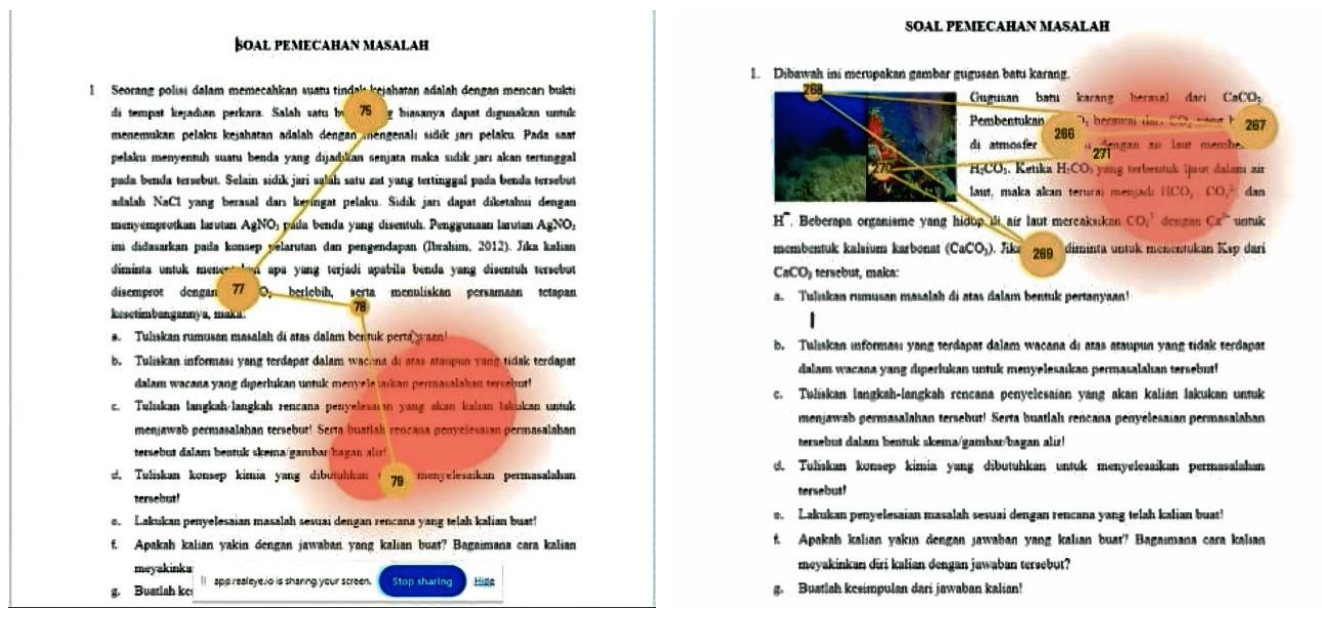
A study by Khairiatul Muna et al. (2025) published in the Jurnal Kimia dan Pendidikan Kimia (JKPK) used the RealEye online eye-tracking platform to explore how pre-service chemistry teachers with non-science backgrounds focus their attention when solving chemistry problems. The research was conducted by researchers from Universitas Islam Negeri Antasari Banjarmasin, Indonesia.
Many students enter chemistry education programs without a science background from high school. Understanding how they read, interpret, and solve chemistry problems can help educators design better teaching strategies. Traditional assessments only show the final answers, but not how students think and focus while solving a problem. Eye-tracking provides a way to see what draws their attention and how efficiently they process information.
The researchers used RealEye webcam-based eye-tracking to record participants’ visual behavior while they solved chemistry problems online.
Because RealEye works through a regular webcam, no special equipment was required - just a computer with a camera and stable internet connection.
Two pre-service chemistry teachers from non-science backgrounds took part in the study. They were asked to solve two main chemistry problems (each with six sub-questions) while RealEye tracked where they looked, how long they focused on different areas, and how often their eyes moved between sections.
The system collected detailed data, including:
After completing the test, participants were interviewed about their problem-solving strategies and experiences using the RealEye platform (learn more here: RealEye Survey Module).
Data from RealEye were exported in CSV format, containing fixation points, coordinates, time stamps, and duration data. Researchers analyzed these quantitatively to measure attention and qualitatively to interpret how students read and thought through the problems.
The combination of eye-tracking recordings and interviews gave a full picture of each participant’s visual and cognitive process.
Both participants spent a long time observing, reading, and solving the problems. However, their performance differed:
These patterns suggest that longer attention alone does not guarantee better problem solving. Efficient visual strategies - such as identifying key information early and scanning relevant details - play a larger role.

The study showed that RealEye can be a valuable tool in education research, helping teachers understand students’ visual focus during complex tasks. For chemistry educators, these insights can guide the design of learning materials that better support students from different academic backgrounds.

Follow the steps below to start your own experiment with RealEye:

Ready to set up your own study? Visit RealEye Support page to learn more and keep us posted on your results! 🚀